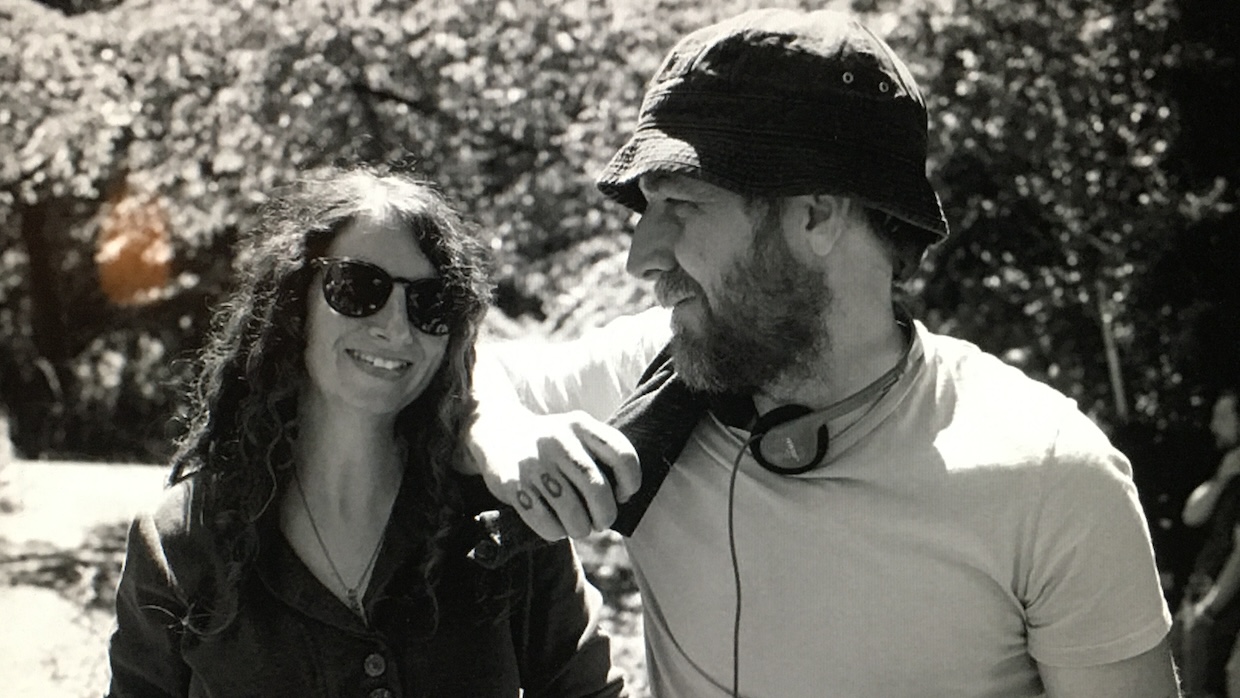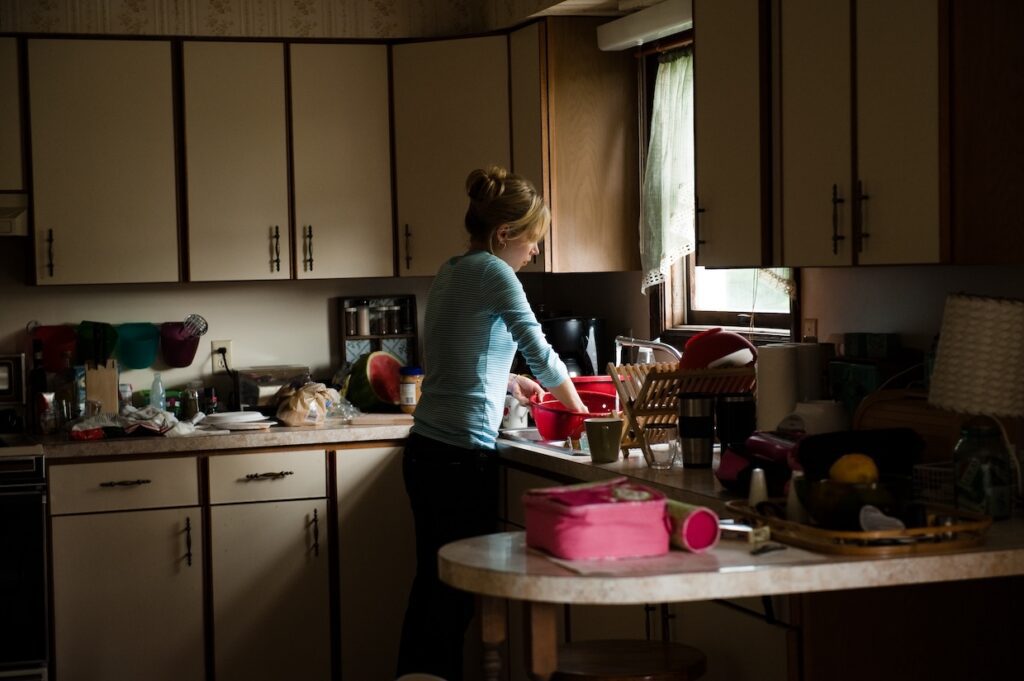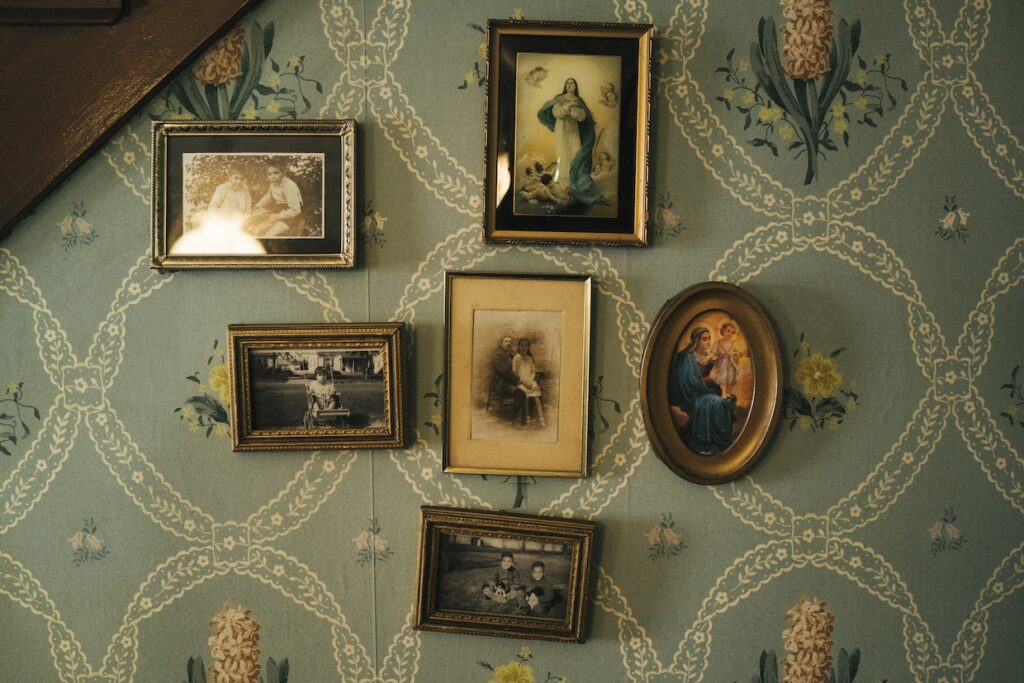 Back to selection
Back to selection
“We Had to Row a Kayak to the Camera Truck to Save the Film Cans”: Director Derek Cianfrance and Production Designer Inbal Weinberg
 Production designer Inbal Weinberg and writer-director Derek Cianfrance
Production designer Inbal Weinberg and writer-director Derek Cianfrance Ahead of the launch of the first-ever International Production Design Week, the Production Designers Collective has coordinated a series of meetings between directors and production designers in which they discuss the particularities about their working dynamics as well as how production design can elevate the vision of a filmmaker.
Derek Cianfrance and Inbal Weinberg first collaborated on Blue Valentine, which set the stage for exploration and discovery. They continued to experiment with environment and process on such projects as The Place Beyond The Pines and I Know This Much Is True. Here they discuss the delicate balance of artifice and authenticity in filmmaking.
Cianfrance: I had been trying to get Blue Valentine made for 11 years when it was finally greenlit. By the time I was interviewing crew, it was a strange dream atmosphere. I was kind of like a crazy person. Interviewing production designers was very new to me. People were pitching me the vision of the movie that was in my head, and I was so protective of it—I knew it, I had watched it for those last 11 years.
But Inbal came with a handmade blue leather diary, a physical object. It was just so romantic and evocative. It felt like the homemade spirit of the movie. I love homemade things, and here Inbal brought me this object that she had touched, and it was so tangible and tactile. She really presented me with a gift, and it meant so much to my heart that it just started our whole relationship.
Weinberg: You kept it in your jacket pocket for months.
Cianfrance: The dream I had for 11 years suddenly became a reality, and you were the person I looked to to give me that world. It was a complete leap of faith. So much of filmmaking is about willful control. What I had envisioned in my mind was one thing, and then there was the chaos of what the universe wanted. It meant surrendering to what was out of my control and listening to the destiny of the film. Matching control and chaos was transformative for me, and I think we brought that concept into our filmmaking. What was it like for you?
Weinberg: I’m so grateful to have had that experience early on in my career, because it expanded my boundaries of what can and can’t happen in filmmaking. I learned that there are many different ways to make a film.
Filmmaker: What does it mean to fully understand a director’s vision, or for the director to communicate it to a production designer?
Weinberg: What I really appreciate about Derek is that he brings people into his process. He’s not precious about it at all. He wants his core collaborators to be there for many of the conversations and experiments. We are invited into the process of filmmaking, and not in a compartmentalized way that is tied to our professions. We’re all in this adventure together.
Cianfrance: And we’re all being asked to fail, which is very hard for a professional crew to do. That’s where I run into the most resistance.
Weinberg: Whenever we welcome new collaborators into Derek’s circle, we ask them to let go of their perceptions about filmmaking, and be open to trying new methods. Specifically in terms of the art department, we try to make crew members understand that we are creating a world that needs to exist. It’s not like “movie world,” it’s more like making a documentary. In other projects, people don’t go to that extent, because at the end of the day that effort is not necessarily visible. So, this style of filmmaking doesn’t really fit into the very dry equations of how much time, money and energy to put into a set and what you get from it.”
Cianfrance: I remember early on in my career I shot a short film, and unbeknownst to me the sound person had unplugged the refrigerator. Because the sound person’s job is to get good sound, right? But I would never do that on one of my movies. I’m not going to try to control everything. That’s what the chaos of the world is bringing to us. So, the point about the refrigerator is that the actor went to get a drink of milk in the middle of the take and the milk had spoiled. When the sound person tried to do a perfect job, he took away from the life that could exist on set.
With Inbal, one of the first things we talked about is how to create a world that is fully livable, which the actors can inhabit. A world that is messy and alive, where the camera can come in and witness a fleeting moment that can’t be replicated.
Weinberg: Trying to create that world and then let it happen is a very difficult equilibrium to figure out. Personally, once I’ve put a ton of effort into a set, how do I deal with it suddenly becoming someone else’s world?
Cianfrance: On Blue Valentine we had a month of rehearsals in the house that was the main set. But I didn’t want to rehearse the script and make all the decisions in advance. I just wanted us to be able to live in that house and develop memories together.
Weinberg: So, we had to create this completely functional house. We actually installed a landline and internet service.
Cianfrance: Inbal had the house all done up, and Michelle [Williams] and Ryan [Gosling] came in and started moving things around. Inbal was upset about it, and I understood. Because as a filmmaker, I had written a script, and they had gone in and weren’t saying my lines. So, I had experienced the same process of letting go and giving over. It’s a surrender.
Weinberg: It happens to an extent in every movie, but in your films we put so much effort and emotional energy into those sets, which makes the surrender harder. I remember that the Blue Valentine house was really messy and you told me I couldn’t clean it because it was a facet of the couple’s unraveling relationship. You wanted them to blame each other for the mess, and fight over washing the dishes. It all made sense in the end when it unfolded so beautifully on film.

Cianfrance: There was another moment in Blue Valentine when Ryan had to bury the family dog. I remember arriving on set in the morning, and your team had dug a hole. When I asked why the hole was already dug, you told me it’s a quarter-page scene, and that the ground had so many roots that it took three hours to get through. And I said “Well, Ryan is going to have to try.” So, Ryan starts digging the hole, and after two and a half hours of shooting, he eventually gets the hole dug. Then when he goes over to pick up the fake dead dog. It’s suddenly heavy, because Ryan’s muscles are exhausted from digging. He goes back to the house and the camera follows him. He gets a beer from the fridge, sits down at the table, then breaks down and starts crying. Ryan told me later that his mind knew that he wasn’t burying his dog, but his body got tricked into experiencing it. To me, that’s the magic that can be discovered through production design, acting and camera. It’s more about the experiment than the proof.
Weinberg: I agree with you about the immersive power of an environment. On I Know This Much Is True, we had a hero house that we had to remake for four different time periods. It kept going back in time. To have that physical experience of returning to the same place as it keeps changing periods was a rare gift. It’s like you’re experiencing the past.
Cianfrance: All of the films we’ve made together have something to do with legacy and ancestry, the past informing the present and future. In the case of the house in I know This Much Is True, we wanted the past to feel as tactile as the present. You kept the same methodology we’ve developed, of making things functional and real through all of the different periods, from Jello molds in the fridge to period working stoves for the actors to cook on.
Weinberg: What really sets apart your filmmaking process from other experiences I’ve had is the amount of space and power you give to your actors. On your films, we often ask actors what they want to see in the sets, try to incorporate their suggestions and walk them through the finished sets. I remember once on The Place Beyond The Pines I showed you a poster we had designed for Ryan Gosling’s character, and you told me “Why are you showing it to me? Show it to Ryan, it’s his poster.”
Before working with Derek, I used to be more dismissive of actors’ input. Now I try to connect with the actors on each of my projects, because I realize that they’ve probably thought in great detail about their character. They can answer questions like “What music do you listen to?” [and] “What’s your favorite color?” as their character. I’ve also learned that actors are much more comfortable in their environments when they have some familiarity with them.
Filmmaker: What were the biggest challenges you’ve faced on your films?
Weinberg: Derek has a reputation for summoning nature disasters, usually on a catastrophic scale. We’ve gone through a flood, a fire…
Cianfrance: No! I’ve never had a weather day.
Weinberg: Remember when we had to row a kayak to the camera truck to save the film cans?
Cianfrance: Yeah, that was the flood.
Weinberg: I think our projects are challenging because recreating reality is basically impossible. Making a Hollywood movie is easy in comparison. I always tell Derek that by trying to create real life on screen we’re defying god, which is why he sends down his plagues.

To check out the complete program of International Production Design Week, go to productiondesignweek.org
